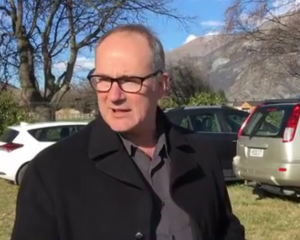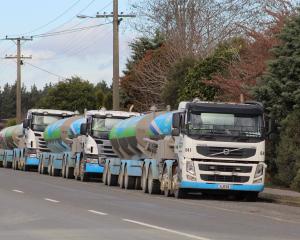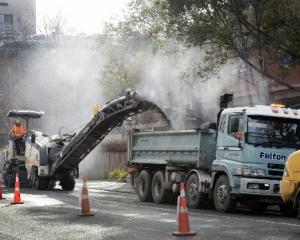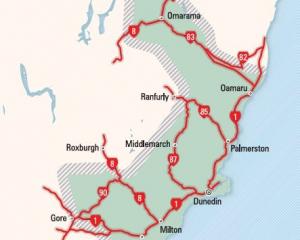Motorists face less risk on Otago and Southland state highway roads than elsewhere in the country, a study of the 11,000km national network shows.
Data released yesterday in a Kiwi Road Assessment Programme (KiwiRAP) report indicated reduced levels of risk on Otago and Southland state highways, which pleased police and the New Zealand Transport Agency.
Nationally, there was a 15% reduction in fatal and serious crashes on state highways, but North Island motorists still faced high risk in parts of Waikato, which boasted the three worst stretches of state highway.
In total, 60 sections of the network were risk-assessed based on traffic volumes and the number of fatal and serious injury crashes between 2007 and 2011.
Data was compared with corresponding figures from the 2002-06 period.
In Otago, from 2007-11, there were 236 fatal and serious-injury crashes on state highways, down from 390 in the 2002-06 period.
NZTA Otago-Southland state highways manager Ian Duncan said there had been a particular focus on improving road safety along SH1 between Oamaru and Dunedin in the past five years.
The reward was a halving to 39 in the number of fatal and serious crashes on the stretch, achieved through a range of measures including speed limit changes at Alma, near Oamaru, and on the Caversham bypass in Dunedin, he said.
"Other factors behind this excellent result have been targeted police enforcement and a number of driver-education campaigns targeting ... driver fatigue and excessive speed," he said.
In Otago and Southland the stretches of state highway with five or more fatal crashes between 2007 and 2011 were State Highway 1 between Oamaru and Timaru (10), SH8 between Alexandra and Milton (8), SH1 between Oamaru and Dunedin (5) and the State Highways 94, 95 and 97 between Lumsden and Te Anau (5).
In total, there were 69 fatal crashes on the 24 sections of state highway roads in both regions, and 324 crashes resulting in serious injury.
None of the regions' state highway roads were classed as high risk and 68% (1291km) was in the lowest of five risk categories.
The only part with increased risk was SH94 between Gore and Lumsden, which went from the low class in 2002-6 to the low-medium class.
The one portion of Otago and Southland state highway previously classed as high risk, SH1 between Dunedin and Mosgiel, had moved into the medium-high category.
Mr Duncan said focus would shift to reducing risk through the Haast Pass and on the state highway at Milford, where there were relatively low volumes of traffic but issues with speed, signage and road markings.
Dunedin-Clutha area road policing manager Senior Sergeant Phil McDouall said police were happy to see fewer fatal and serious injury crashes in the region.
More than half of New Zealand's road fatalities occurred on the state highway network.
In the 2007-11 period the proportion of all state highways classified as high risk dropped to 4% (393km) from 7% (806km).
The proportion of the network classified as low risk increased to 41% (4409km) from 29% (3169km).
NZTA strategy and performance general manager Ernst Zollner said the results were encouraging and enabled the NZTA to target safety improvements where the most lives would be saved and serious injuries prevented.
AA motoring affairs general manager Mike Noon welcomed the results, saying it was vital work continued to make roads safer and more forgiving of people's mistakes.





